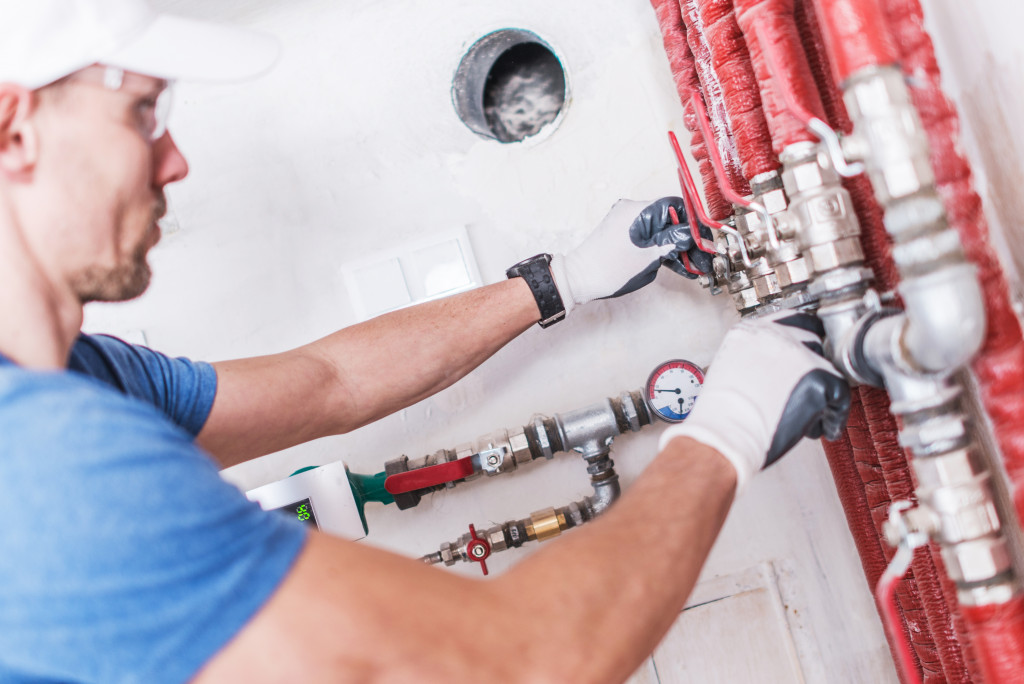- Regularly inspect, clean, and replace components on a scheduled basis to ensure optimal performance.
- Establish strategic troubleshooting strategies in case of any malfunctions.
- Monitor fluid levels and pressure to prevent damage due to excessive wear and tear.
- Utilize the latest technology for real-time monitoring, predictive analytics, and remote diagnostics.
- Implement these five proactive maintenance strategies for the reliable operation of your valve system.
Valve systems are used in many industries, and their proper maintenance is critical to running operations smoothly. Proactive maintenance strategies are essential in taking preventative measures to keep your valves in optimal condition and performing as expected. This article will discuss five key proactive maintenance strategies for valve systems that can help ensure reliable operation for years to come.
Regular Cleaning and Inspections
Keeping the valve system clean and free of debris or contaminants is essential. Regularly inspect your valve systems for dirt, dust, corrosion, or any other damage that could affect performance. You can also check for wear and tear in the components themselves. Be sure to replace any worn-out parts before they cause significant problems.
Making sure that all safety relief valves are regularly inspected is also critical. Safety relief valve diagnostics can help you identify any potential problems before they cause major damage. Look for irregularities in pressure, temperature, and flow and any unusual sounds or smells. Also, check for signs of corrosion or leaks. Proper maintenance of your safety relief valves will ensure the safe operation of your system.
Proactive Replacement Scheduling
Establishing a proactive replacement schedule is essential for maintaining a healthy valve system. Replacing components on a pre-determined schedule before they become too worn out can help prevent unexpected breakdowns due to part failure. This will also reduce the overall maintenance required and help avoid costly repairs in the future.
Valve systems can be complex and challenging to monitor daily. A proactive replacement schedule allows you to avoid any problems that may arise by replacing components before they become too worn out. This reduces the likelihood of unscheduled downtime due to part failure or other malfunctions, which can result in costly repairs and even accidents. It can also help improve system performance by allowing for better planning and coordination of maintenance activities.
Strategic Troubleshooting Strategies

It’s essential to have a plan in place for when something goes wrong with your valve system. Having a troubleshooting strategy can minimize downtime and ensure that any issues are dealt with quickly and efficiently. This will help reduce the cost of repairs and keep your valve system running smoothly.
Here are some strategic troubleshooting strategies you can implement:
Take a close look at the system
Before jumping right into troubleshooting, take some time to assess the entire system and identify any potential issues that may be causing your problems. Look for signs of wear and tear, blockages, leaks, and changes in pressure or flow rate.
Check all valves
If there is a problem with your valve system, chances are it’s related to a valve. Start by checking each valve one at a time for any signs of damage or malfunction.
Use diagnostic tools
There are many diagnostic tools available that can help you accurately identify potential problems with your valve system. These devices range from digital flow meters to smoke testers and can help troubleshoot much easier.
Consult your manual
Many valve systems come with an instruction manual outlining common problems and solutions for each component. Make sure to consult your user manual regularly for advice on diagnosing and resolving issues with your valve system.
Reach out for help
If you’re having trouble diagnosing a problem with your valve system, don’t hesitate to contact the manufacturer or a local technician for assistance. They can provide technical advice and recommend specific solutions that will help your valve system run smoothly again.
Monitoring Fluid Levels and Pressure
Regularly monitoring fluid levels and pressure is key for ensuring optimal valve system performance. Ensure all fluids are at their correct levels, and constantly check the pressure to ensure it doesn’t exceed its maximum capacity. Proper fluid levels and pressure maintenance will help prevent breakdowns due to excessive wear and tear on components.
It is important to remember that the pressure on your system should remain steady. In addition, finding the balance between low and high pressures is essential for a smooth-running process. When pressure is too high, it can cause an overload of components, leading to potential safety hazards and potentially fatal outcomes. On the other hand, when the pressure drops significantly, it can decrease the efficiency of your system, reducing its performance.
Utilizing the Latest Technology

You can use the latest technology to monitor and troubleshoot problems in your valve system. There are various ways to use technology, such as real-time monitoring for fluid levels and pressure, predictive analytics for potential issues, or even remote diagnostics for quick resolution of any problems. Utilizing the latest technology will help keep everything running smoothly and efficiently.
By taking advantage of the latest technology, you can also detect issues before they become larger problems. With predictive analytics, data points that exceed pre-determined thresholds can be detected in real-time and reported to the appropriate personnel. This helps reduce downtime or even avoid costly repairs altogether. Additionally, remote diagnostics can be used to identify and troubleshoot issues quickly, even when personnel isn’t on-site. This is especially useful for systems located in remote locations or areas of difficult access.
In Summary
Proactive maintenance is essential for keeping your valve system functioning properly. By regularly inspecting, cleaning, and replacing components on a scheduled basis, establishing strategic troubleshooting strategies, monitoring fluid levels and pressure, and utilizing the latest technologies, you can ensure optimal performance for years to come. With these five proactive maintenance strategies in place, you can rest assured that your valve system will always operate at its best.
